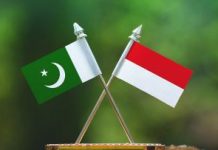The recent visit of the U.S. President to several Gulf states marks another chapter in Washington’s long-standing but increasingly complex relationship with the Middle East. As with previous high-profile tours, this one was cloaked in the familiar rhetoric of “strategic partnership,” “regional stability,” and “mutual cooperation.” However, as the dust settles, questions are being raised over the tangible outcomes of this diplomatic engagement and what it truly means for a region marred by conflicts, power rivalries, and humanitarian crises—particularly the ongoing genocide in Gaza.
While the optics of the visit were carefully choreographed—warm handshakes, joint press conferences, and pledges of continued cooperation—the aftermath reveals that many of the core issues remain unresolved. The Palestinian crisis, which should have been a central topic, was largely reduced to platitudes. Although the U.S. President made a fleeting acknowledgment that “Gaza needs help,” this statement fell drastically short of a strong, principled stance against Israel’s continued aggression. The comment appeared more as a diplomatic gesture to appease Gulf leaders emotionally invested in the cause, rather than a commitment to action.
Notably, the visit did not result in any firm policy shift or economic sanctions to pressure Israel into ceasing its military campaign. Nor was there a roadmap for a ceasefire, humanitarian access, or rebuilding war-torn Gaza. Instead, the U.S. administration maintained its traditional balancing act—voicing concern over humanitarian issues while continuing to support Israel militarily and diplomatically.
For Gulf leaders, the visit offered a platform to reiterate their calls for justice in Palestine and push for stronger economic ties with the West. Yet even they are limited in their leverage. Despite outward expressions of solidarity, few Gulf nations are willing to confront Washington or Tel Aviv with any real consequence—whether by halting trade, limiting oil exports, or severing diplomatic ties. This lack of collective pressure renders their calls for peace hollow.
Another key takeaway is the growing perception among youth and civil societies across the region that Western powers continue to prioritize geopolitical interests over human rights. This sentiment is particularly acute in light of increasing awareness—largely fueled by social media—of the disproportionate suffering of Palestinians. The credibility gap between words and actions is not only eroding public trust in Western leadership but also putting pressure on local governments to rethink their passive postures.
Furthermore, the visit underscored the U.S.’s desire to counter Chinese and Russian influence in the region, particularly in the energy and defense sectors. However, focusing on great-power competition without addressing regional grievances—such as the plight of the Palestinians or internal conflicts in Yemen and Syria—risks alienating key populations and emboldening extremist narratives.
In conclusion, while the U.S. President’s visit to the Gulf may have served diplomatic decorum, it lacked the moral courage and actionable commitment needed in times of crisis. For the people of Gaza and millions watching around the world, symbolic gestures are no longer enough. The Gulf visit may be over, but the region is still waiting—for justice, for accountability, and for real change.

















